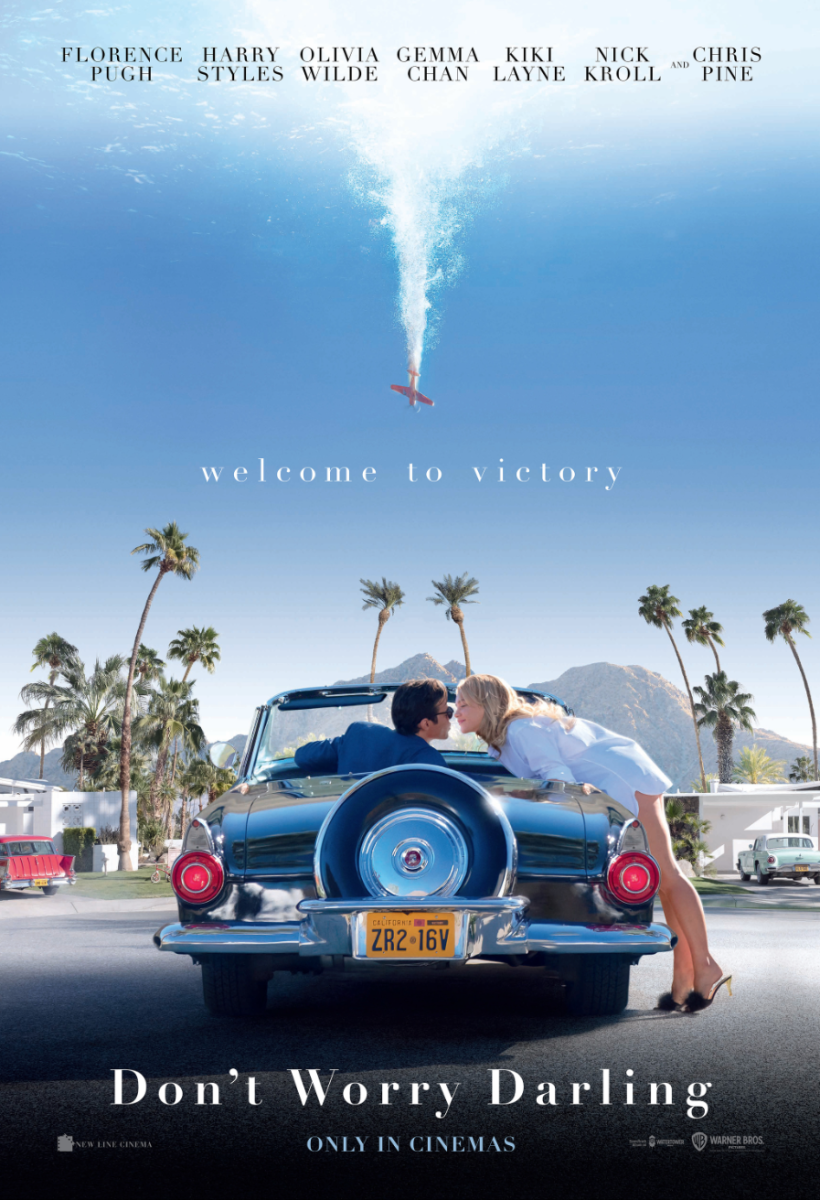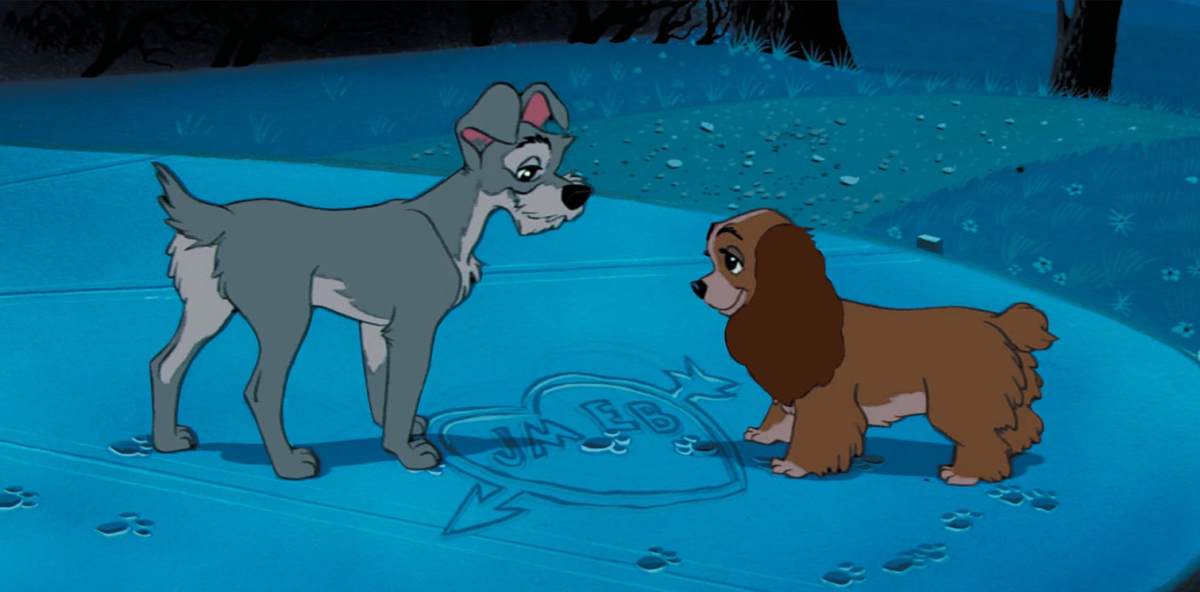Rating: 6/10
Note: This story contains spoilers for the movie “Don’t Worry Darling.”
With so much anticipation festering over the course of nearly a year, Olivia Wilde’s “Don’t Worry Darling” has finally hit public theaters on Sept. 23. The month leading up to the release has been riddled with drama and rumors among the director and her cast, something that feels fitting after experiencing the movie.
Starting off with the strongest element across the entire film, Florence Pugh plays Alice Chambers, a picture-perfect cutout of a 1950s housewife that enjoys simple chores, ballet class and waiting for her husband Jack Chambers, played by Harry Styles, to come back from working to provide for her “happy” life.
Movie watchers were correct in their assessment that Pugh held the film to its potential with her acting, despite having Styles as her co-star. Pugh gave an anticipating, hand-gripping look into what truly lies in a relationship and what love looks like in the eyes of the beholder. There was not a moment of doubt as the British actress gave the audience an emotional performance that left them on the edge of their cushioned seats.
As for Styles, the British singer-songwriter should reevaluate entering the film industry after this project. What felt like a key piece to the story, Styles butchered it with his inability to act beyond simply saying lines. The new actor created a 2D character with his incompetence to stay in one accent and lack of portrayal of any type of emotion. The scene that was considered to be the feeling of betrayal, after practically snitching on his wife, seemed like a joke that had the theater snickering from seeing a grown man throw a temper tantrum.
The one credit that should be awarded to Styles, would be his portrayal of a modern-day incel; he truly mastered the art of clingy and hopelessness.
On another note, it was odd to notice the unnecessary sight of Bunny, played by Wilde, throughout the film while the audience was left questioning about truly important characters like Margaret and Shelley, the only characters that were played by non-white actresses in this film. Both female characters were essential roles in explaining the true harshness of this man-made “virtual reality,” it would only be fair and good directing to keep their scenes instead of cutting them, like Kiki Layne expressed recently on social media.
It is understandable to consider this a “feminist” piece of media given the way that our main heroine breaks from the mind-washing, monotonous life that comes with constantly providing for a working man. But the way that it is being interpreted from certain audiences is concerning, all because the villain of this story is an attractive white man who takes gaslighting to another level.
Besides Pugh’s acting, the soundtrack is truly an experience that is worth a drive to the local theater. John Powell, a film composer known for “How to Train Your Dragon” and the “Bourne Identity” franchise, created an eerie and blood-pumping score that framed the scenes to be the thriller film it is. The score mixed with the classic 1950s allowed for the audience to be immersed in the 1950s drama with a dream-esque feel.
With colorful scenes and thought-provoking dialogue that is sure to be remembered based on which British actor is saying it, the directing of this film was all in all mediocre. Wilde has several movies under her directing sleeve, 2019’s “Booksmart” being one of them, but none that dive into the mind thriller genre like this film.
It is important to note that some things are better left for interpretation for the audience member to think about on the drive home or to discuss with friends over dinner. But, this film had too many plot holes to the point of wondering what was cut and what was used from production. Why did Gemma Chan’s character stab Chris Pine when there was no real reason shown before the scene? Why was Margaret always mentioned but never seen? There is a fine line between intentional lack of information to get the brain thinking long after the movie and just not showing enough due to poor writing.
Wilde’s “Don’t Worry Darling” has the potential to be an enjoyable watch when one goes in expecting the worst. It is a film filled with pastel colors, cocktails and the ups and downs of a married life, but the longer the audience stays, the more chaos it brings.
“Don’t Worry Darling” is out now in theaters.










